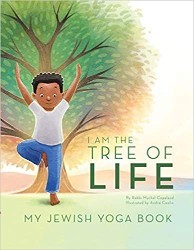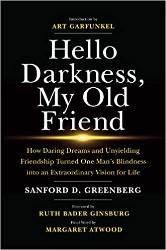The Polio Pioneer is a picture book biography of Dr. Jonas Salk, and it arrives at a crucial moment. Best known as the scientist who developed an effective vaccine against the polio virus, his life dedication to eradicating disease is an essential subject for young readers. From early childhood and on, Salk’s conviction that reliance on reason and hard work would bring about the betterment of the human condition defined his approach to achieving his goals. The book frames his early life within Jewish values and culture, while also emphasizing how his scientific successes were universal in their scope, protecting children around the world.
The Polio Pioneer opens with a shelf of glass bottles and beakers, delicately colored and carefully spaced to produce the snapshot effect of a busy laboratory. The book is about Salk but is also a tribute to the scientific method, explained on an accessible level. Central to the story is Elovitz Marshall’s characterization of Salk’s personality. The author enters Salk’s consciousness when, as a young boy, he watches a World War I victory parade, asserting that he feels less excitement than sorrow at the sight of so many wounded soldiers; “Jonas Salk was a kid who saw things differently,” the author summarizes. A scene of children engaged in New York City street games of stickball and jacks shows Salk quietly reading, accompanied by the explanation that other children asked him to be the referee because of his knowledge and fairness. Anchin’s pictures of Salk as an almost preternaturally mature child — his nose in a book while others play or patiently teaching English to his Yiddish-speaking mother — support the idea that Salk’s sense of difference was an intrinsic part of his future success. This interpretation communicates the importance of individuality and persistence.
The book insists on the importance of Salk’s Jewish identity to his career as a scientist. Since the book is aimed at a young audience, the distinction between religious observance and cultural Judaism is minimized. Beautiful images of the young Salk wearing tefillin and praying with his father, and of a traditional holiday celebration viewed from the window of his family’s urban apartment building infuse readers with a sense of pride in Jewish identity. These scenes are quite typical of Jewish American life at the time; their connection to Salk’s later life may not be as direct as the author implies. On the other hand, the author provides accurate information that City College, when Salk studied there, was a haven for Jewish students denied access to private institutions with Jewish quotas. The young scientist would undoubtedly have been aware of the limitations placed on him because of his identity.
Anchin’s illustrations also combine fact and fiction in a subtle and effective way. She captures the scourge of polio in a hospital scene where nurses make rounds in a room full of stricken children. Each child has a colorful blanket with a unique pattern, preserving their individuality. Another picture shows President Roosevelt sitting in his wheelchair in the White House — although he was virtually never photographed that way because of the stigma associated with disability. Anchin also includes people of diverse races and backgrounds in many scenes, from children lined up to be vaccinated, to scientists working together at the Salk Institute. In today’s world of disinformation and divisive attacks on science and its practitioners, Elovitz Marshall and Anchin have created an uplifting narrative about improving the world through both genius and the spirit of cooperation.
This highly recommended book includes an “Author’s Note” with further information about polio and how Elovitz Marshall became committed to telling Salk’s story.
Emily Schneider writes about literature, feminism, and culture for Tablet, The Forward, The Horn Book, and other publications, and writes about children’s books on her blog. She has a Ph.D. in Romance Languages and Literatures.





